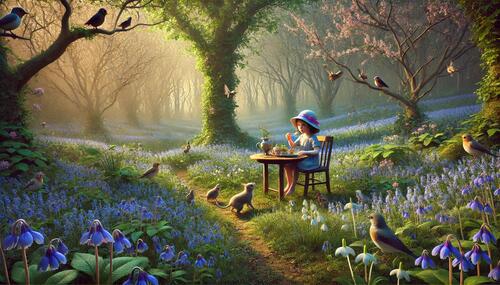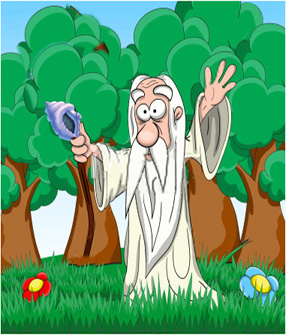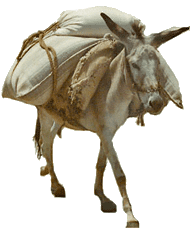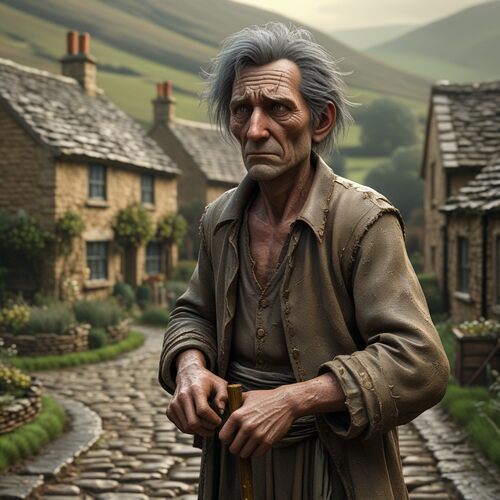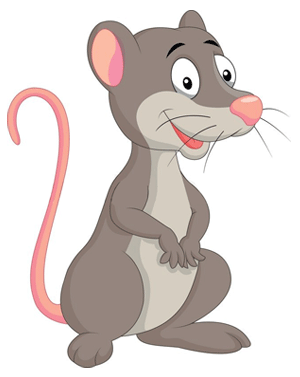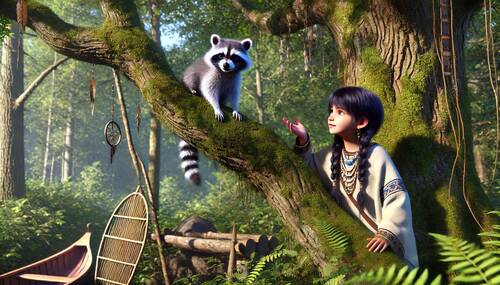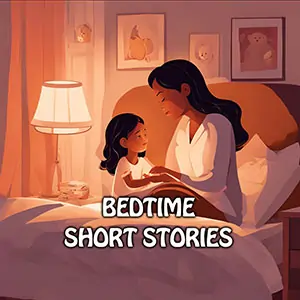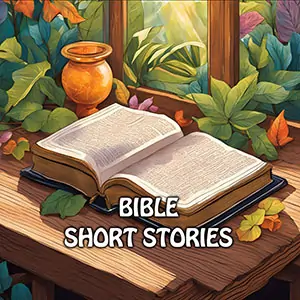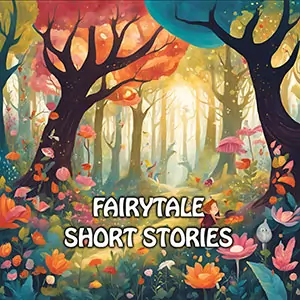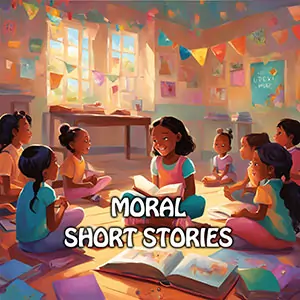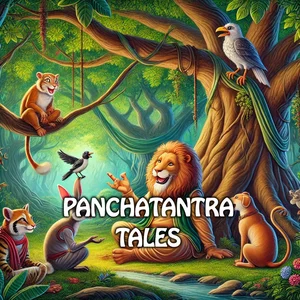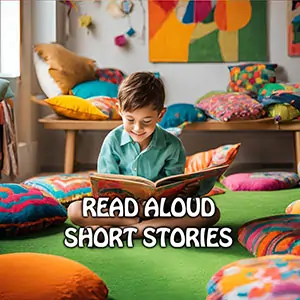Short Stories » Wild Animals from the Indian Stand-Point
Wild Animals from the Indian Stand-Point - Page 4 of 7
" Ugh, ugh! they do not train their young, I tell you!" interrupted Katola, again.
"Wait until Kangee tells what he knows and then tell us your thought," interposed Hohay. " It is not fair to doubt the word of a fellow-hunter."
"I want to tell what I myself saw," resumed Kangee. "Near the Black Hills, in the early spring, we hunted the bison. My brother and I followed two cows with their small calves. They disappeared over a ridge into a deep valley.
“We hastened on and saw only one cow running on the other side without her calf. In the ravine we came upon the other, and saw her vigorously push the calf down two or three times, but each time it rose again."
"Ha, ha, ha! The calf refused to hide," they all laughed.
"When she saw us, she turned and ran on with her calf. Presently she entered another valley, and emerged on the other side with- out the little one. At the first ravine, one cow succeeded in cacheing her calf the other failed. She had a disobedient child, but finally she got rid of it. After a time the calf understands its mother's wishes; then she always succeeds in cacheing her young when pursued."
" Tula, tula, kola! That is common knowledge of all hunters; surely Katola cannot doubt that," remarked Hohay.
" Not that I only said that they do not teach them. They do these things without thought or deliberate planning," insisted Katola.
" But you must know that even a baby who has no mother after a while forgets to take the breast when one is offered to him. It is constant bringing to the young creature and continual practice that is teaching," Hohay declared, and the other two nodded approval.
" Neither do I believe in a language of animals," Katola remarked.
" It may be there is none ; but, even so, do we not convey the strongest meaning with- out a sound or a word ? In all our speeches what is most important may be expressed by a silence, a look, or a gesture even by the attitude of the body." Hohay continued rapidly in his argument : ' Is it impossible that these people might have a simple language, and yet sufficient for their use?
" All that a man can show for his ancestry, when he is left alone from infancy, are his two legs, two arms, a round head, and an upright carriage, or partially upright. We know this from those children who have been found by wolves and nourished in their caves until well grown. They were like beasts and without a language.
' It is teaching that keeps man truly man and keeps up the habits and practices of his ancestors. It is even so with the animals. They, too, depend for their proper skill and development upon the mother influence, encouragement, and warning, the example constantly set before them which leads them to emulate and even surpass their elders. We Red men have no books nor do we build houses for schools, as the palefaces do. We are like tin- Itrar, tin- beaver, the deer, who teach by example and action and experience. How is it? Am I right?" the old man appealed to his attentive listeners.
'Yes, yes, it is true," replied Kangee and Sheyaka, but Katola said nothing.
"Is it not our common experience," resumed Hohay, ' that when we kill or trap one or two beaver in a night, all the beaver stay in-doors for several nights within a considerable distance? This is equally true in the case of the otter and mink. I have often started up a deer, and every deer he passed in his flight would also flee. But when they run at random in play they do hot cause a general stampede.
« BackNext »Wild Animals From The Indian Stand Point - Takeaway for Class 1,2,3
Wild animals are not just fascinating to watch, but they play important roles in nature and need to be respected and protected.
Wild Animals From The Indian Stand Point - Takeaway for Class 4,5,6
Even though wild animals can be dangerous, they play an important role in nature and need to be respected and protected.
Wild Animals From The Indian Stand Point - Takeaway for Class 7,8,9
When we respect and understand wild animals and their habitats, we can coexist peacefully and learn valuable lessons about nature's balance.
3 Fun Facts
- Wild elephants are incredibly social animals and live in close family groups led by a matriarch, the oldest female.
- Tigers are excellent swimmers and often enjoy cooling off in water bodies, which helps them stay cool.
- Monkeys are known to be playful and intelligent creatures, often using tools and communicating with various vocalizations and facial expressions.
Quiz for Class 1,2,3
- What kind of animals does the story talk about?
- Where are the wild animals mentioned in the story found?
- Why is it important to protect the wild animals, according to the story?
Quiz for Class 4,5,6
- What lesson did the boy learn about approaching wild animals after his encounter with the bear in the story?
- How did the appearance of the forest change the boy's feelings about his adventure?
- What did the boy decide to do when he realized he was lost in the forest after meeting the tiger?
Quiz for Class 7,8,9
- What lesson does the story convey about the relationship between humans and wild animals?
- How does the story describe the impact of human actions on the habitats of wild animals?
- What examples from the story illustrate the challenges faced by wild animals due to environmental changes?
Was this article useful? What should we do to improve your experience? Share your valued feedback and suggestions! Help us to serve you better. Donate Now!
